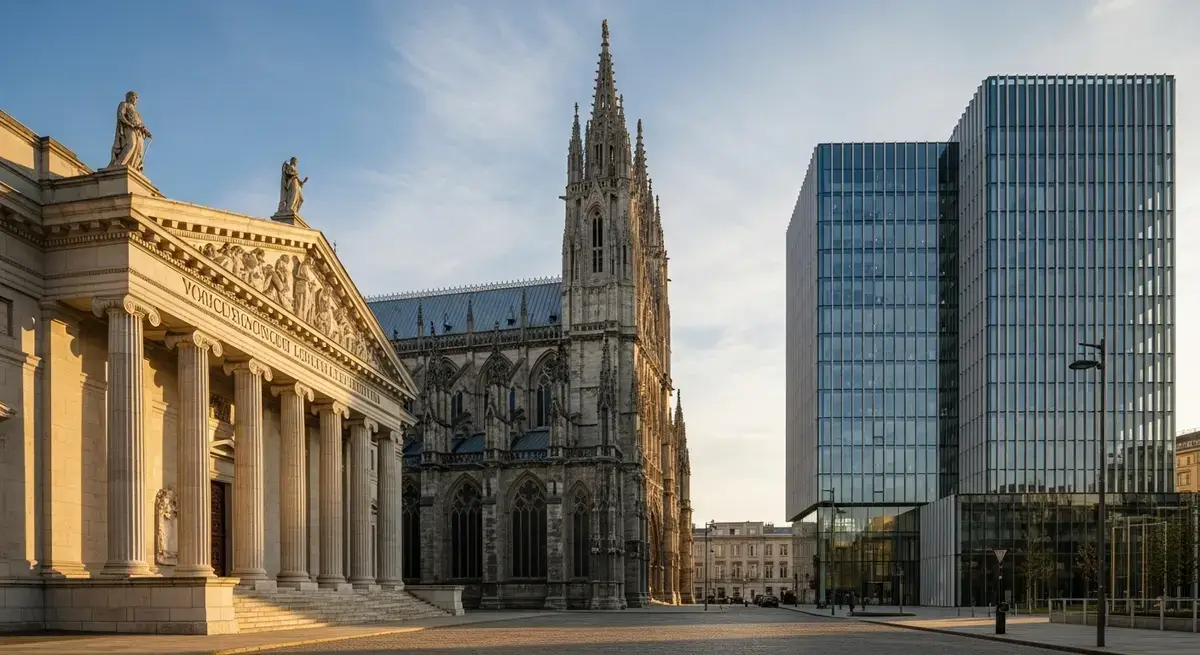Discover the Fascinating World of Architectural Styles
Architectural styles offer a captivating glimpse into the cultural and historical evolution of human creativity in building design. By exploring these styles, we unlock stories about the values, technologies, and artistic visions that shaped different eras. This guide takes you on a journey through some of the most influential architectural styles—from ancient times to the modern day—highlighting their distinct features and lasting impact on our surroundings.
What Makes an Architectural Style Unique?
An architectural style is much more than just a look; it’s a combination of shapes, building techniques, materials, and regional influences that together form a recognizable visual language. These elements evolve alongside society, reflecting shifts in technology, culture, and social needs. Understanding this helps us appreciate how architecture mirrors human progress over time.
The Timeless Appeal of Classical Architecture
Classical architecture, originating in ancient Greece and Rome around the 5th century BCE, laid the groundwork for much of Western design. This style is renowned for its perfect symmetry, balanced proportions, and iconic columns—Doric, Ionic, and Corinthian—that convey strength and elegance. These principles not only defined their era but also inspired countless generations of architects.
How Classical Design Shaped Future Movements
The influence of classical architecture extends far beyond antiquity. Styles like Neoclassical and Greek Revival drew heavily from these ancient ideals. Landmarks such as the United States Capitol stand as proud testaments to the enduring power of classical design. Even today, the "new classical" movement keeps these timeless aesthetics alive.
Exploring the Rich Diversity of Religious Architecture
Religious buildings often serve as cultural masterpieces, blending art and architecture in extraordinary ways.
-
Islamic Architecture: Blossoming from the 7th century onward, Islamic architecture is famed for its majestic mosques and intricate calligraphy. Masterpieces like the Alhambra in Spain and the Hagia Sophia in Turkey showcase this rich heritage with breathtaking artistry.
-
Gothic Architecture: From the 12th to 16th centuries, Gothic architecture introduced soaring pointed arches, ribbed vaults, and flying buttresses. Structures such as Notre-Dame Cathedral and Westminster Abbey exemplify the grandeur and delicate craftsmanship of this style.
The Renaissance: Revival of Classical Harmony
Renaissance architecture, emerging in 15th century Florence, brought a renewed focus on balance, proportion, and classical inspiration. St. Peter’s Basilica in Rome perfectly captures this revival, blending ancient ideals with innovative design.
From Renaissance to Baroque: Embracing Drama and Ornamentation
Following the Renaissance, the Baroque era (1600-1750) introduced a more theatrical and expressive style. With its dynamic forms and lavish decorations, Baroque architecture marked a bold departure toward emotional intensity in design.
The Evolution of Home Styles: From Tudor to Colonial
Domestic architecture tells stories about everyday life and cultural influences.
-
Tudor Architecture: Originating in late 15th-century England, Tudor style mixes Gothic and Renaissance elements. Its charming half-timbered houses became popular in the U.S. during the late 19th and early 20th centuries, celebrated for their detailed craftsmanship.
-
Colonial and Cape Cod Styles: Colonial architecture reflects the diverse backgrounds of early American settlers, while Cape Cod homes are known for their simple, functional design. These styles emphasize practicality and regional adaptation, creating cozy yet enduring homes.
Modern Architecture: Function Meets Innovation
The 20th century ushered in a new architectural era focused on simplicity and purpose.
-
Modern Architecture: After World War I, movements like Bauhaus and the International Style championed clean lines, minimal ornamentation, and innovative use of materials. This shift prioritized function over form, reshaping urban landscapes worldwide.
-
Postmodern and Contemporary Architecture: Reacting against modernism, postmodern architecture of the 1960s and 70s reintroduced historical references and playful eclecticism. Today’s contemporary architecture embraces diversity and sustainability, reflecting our growing environmental awareness.
Unearthing Lesser-Known Styles That Enrich Our Architectural Heritage
Beyond the famous styles, several unique movements have played important roles.
-
Victorian Architecture: From 1830 to 1910, Victorian design thrived with a rich blend of historical influences. Its eclectic charm remains visible in many U.K. and U.S. neighborhoods, offering a vivid tapestry of architectural creativity.
-
Vernacular Architecture: Rooted in local traditions and materials, vernacular architecture adapts to environment and culture. Its emphasis on sustainability and identity makes it a vital part of preserving architectural heritage.
Embrace the Stories Embedded in Architecture
Understanding these diverse architectural styles deepens our appreciation for the artistry and cultural significance woven into the buildings around us. Take the time to explore local examples and celebrate the rich narratives that our built environment continues to tell.


